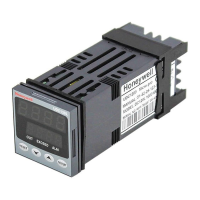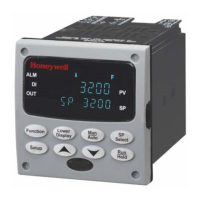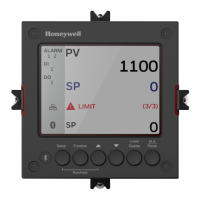Message Exchange Formats
8/99 RS232 Communications Reference Manual 33
4.6.2 Mantissa and Sign
The mantissa is defined by a sign bit (31) and a 23-bit binary fraction. This binary fraction is combined with
an “implied” value of 1 to create a mantissa value which is greater than or equal to 1.0 and less than 2.0.
The mantissa is positive if the sign bit is zero (reset), and negative if the sign bit is one (set). For example:
DECIMAL
HEXADECIMAL BINARY
100 42C80000 01000010 11001000 00000000 00000000
The sign bit is zero, indicating a positive mantissa. Removing the sign bits and exponent bits, the mantissa
becomes:
HEXADECIMAL
BINARY
480000 xxxxxxxx x1001000 00000000 00000000
Add an “implied” value of one to the left of the binary point:
BINARY
1.1001000 00000000 00000000
Using positioned notation, this binary number is equal to:
10 1 0 0 1 10 05 00 00 00625 15625. ( )( )( )( ) . . . . . .+ + + + =++++ =x2 x2 x2 x2
-1 -2 -3 -4
4.6.3 Exponent
The exponent is defined by an unsigned 8-bit binary value (bits 23 through 30). The value of the exponent
is derived by performing a signed subtraction of 127 (decimal) from the 8-bit exponent value.
DECIMAL
HEXADECIMAL BINARY
100 42C80000 01000010 11001000 00000000 00000000
removing the sign and mantissa bits, the exponent becomes:
DECIMAL
HEXADECIMAL BINARY
133 85 x1000010 1xxxxxxx xxxxxxxx xxxxxxxx
or:
1x2 x x2 x2
x2 x2 x2
7543210
+++++++02 0 0 0 1 0 1
6
Subtract a bias of 127 from the exponent to determine its value: 133 – 127 = 6.
Continued next page

